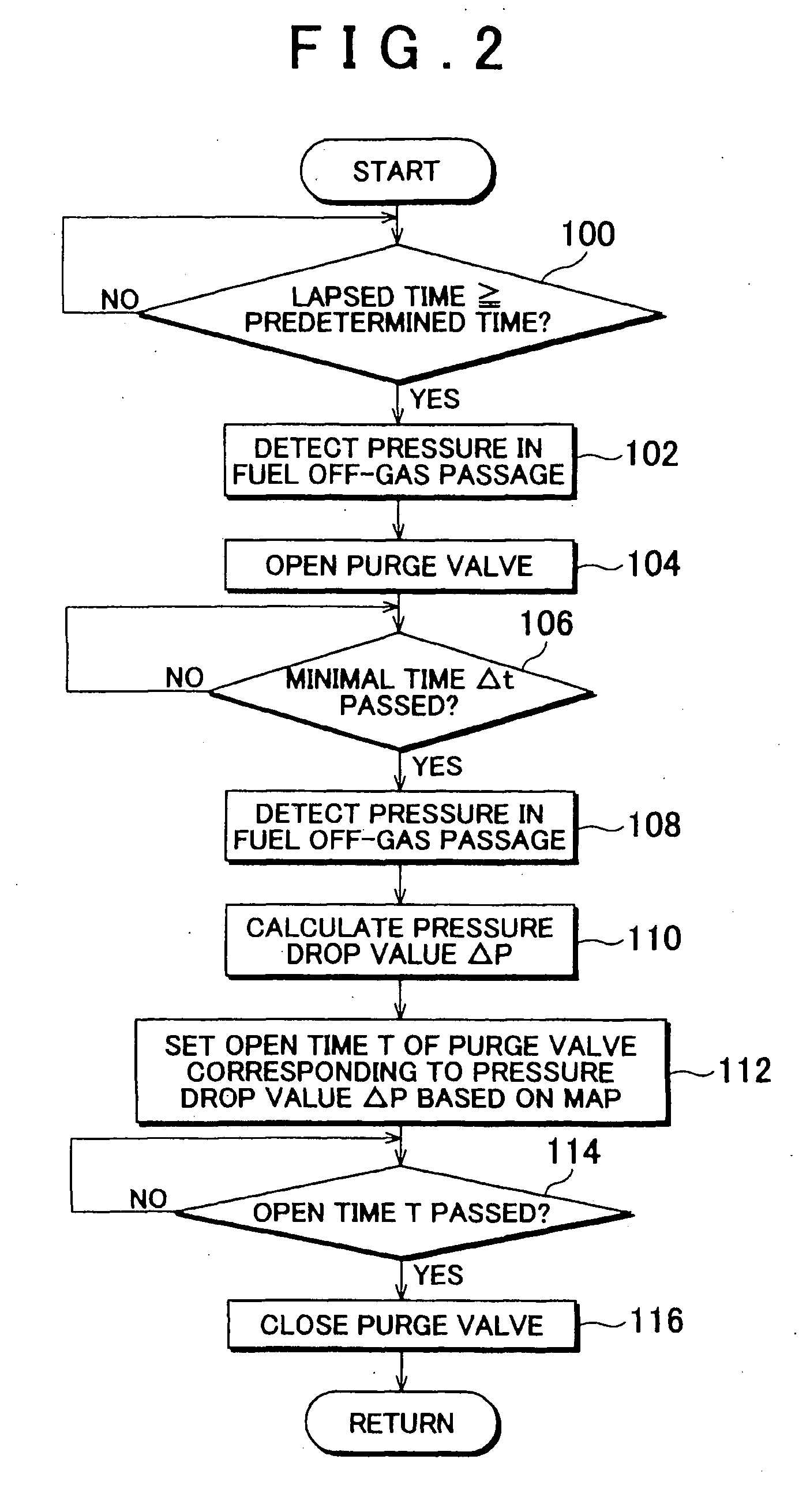Fuel Cell System and Fuel Gas Control Method
a fuel cell and gas control technology, applied in the field of fuel cell systems, can solve the problems of increasing the concentration of nitrogen in fuel, lowering the power generation performance of the fuel cell, and not being able to discharge enough nitrogen, etc., to achieve accurate nitrogen concentration estimation, reduce the effect of fuel economy caused by unnecessarily discharging hydrogen, and accurate nitrogen concentration estimation
- Summary
- Abstract
- Description
- Claims
- Application Information
AI Technical Summary
Benefits of technology
Problems solved by technology
Method used
Image
Examples
Embodiment Construction
[0027]Hereinafter, an embodiment of the invention will be described with reference to FIGS. 1 to 3.
[0028]A fuel cell system according to the invention may, for example, be applied to other automotive fuel cell systems mounted in vehicles; however, it can also be applied to fuel cell systems for other purposes.
Description Of Fuel Cell System Structure
[0029]FIG. 1 is a drawing showing a schematic structure of a fuel cell system serving as a first embodiment of the invention. As shown in the figure, the fuel cell system has a fuel cell 2 serving as an electric power supply mechanism. The fuel cell 2 is structured with an electrolyte membrane permeable to hydrogen ions sandwiched between an anode and a cathode, which are catalytic electrodes (the electrolyte membrane, anode, and cathode are omitted in the figure). Electricity is generated by supplying fuel gas including hydrogen to the anode, and supplying oxidation gas including oxygen from the air or the like to the cathode. A fuel ga...
PUM
 Login to View More
Login to View More Abstract
Description
Claims
Application Information
 Login to View More
Login to View More - R&D
- Intellectual Property
- Life Sciences
- Materials
- Tech Scout
- Unparalleled Data Quality
- Higher Quality Content
- 60% Fewer Hallucinations
Browse by: Latest US Patents, China's latest patents, Technical Efficacy Thesaurus, Application Domain, Technology Topic, Popular Technical Reports.
© 2025 PatSnap. All rights reserved.Legal|Privacy policy|Modern Slavery Act Transparency Statement|Sitemap|About US| Contact US: help@patsnap.com



